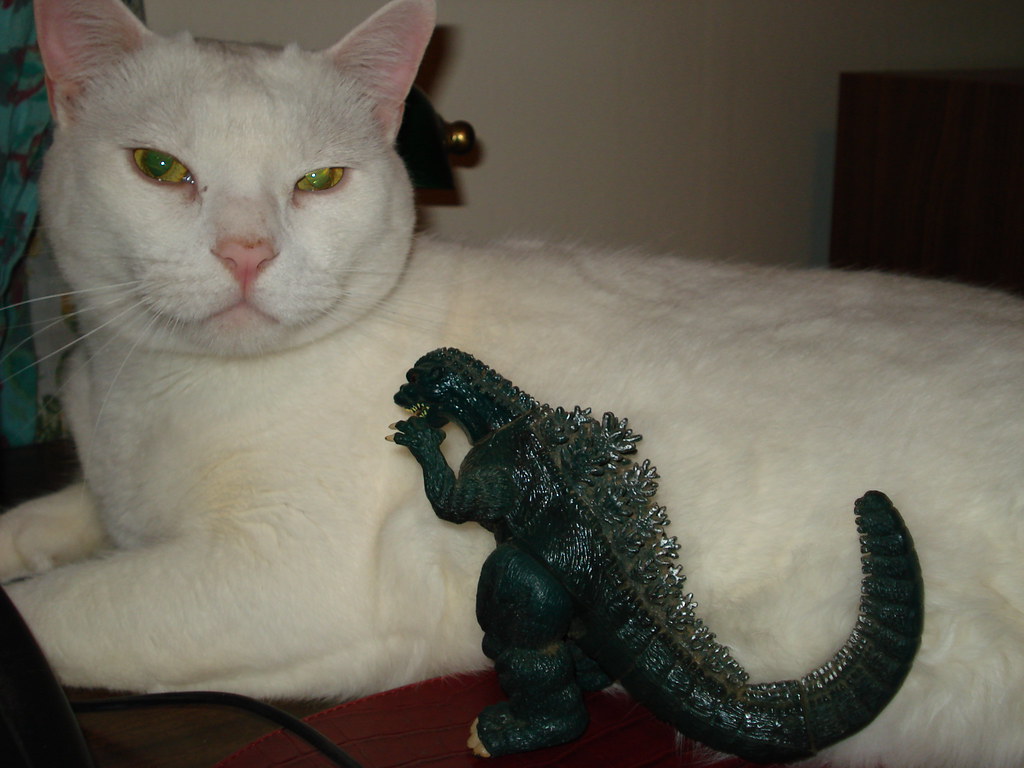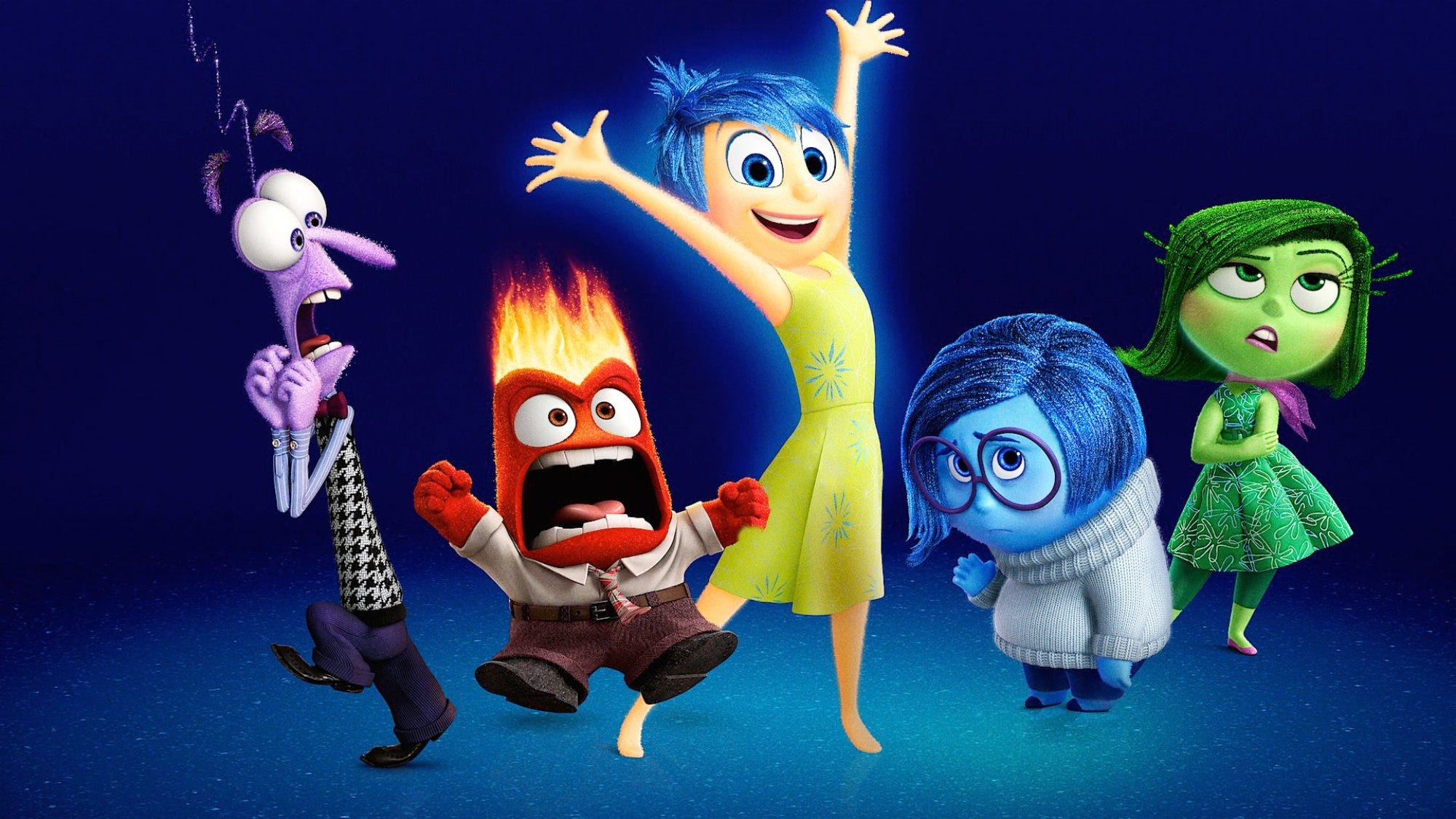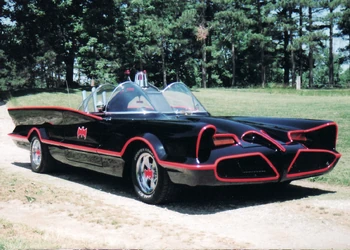The Ninth Circuit rules that The Moodsters characters are ineligible for copyright protection, denies panel and en banc rehearings: Daniels v. Walt Disney Company
 |
This Kat has a toy character protected by copyright
|
Although U.S. copyright protection extends only to original works of creative expression, sufficiently distinctive elements - such as the characters in a fictional work - may be protected by copyright. Not only are the films, Godzilla, Rocky, and E.T. the Extra-Terrestrial protected by copyright, but the respective characters for which each film is named are also protected by copyright.
In March, the Ninth Circuit Court of Appeals ruled that The Moodsters characters, a line of five, color-coded, anthropomorphic emotions are not subject to such protection for a want of sufficient delineation. This ruling came at the end of the lawsuit initiated by The Moodsters creator, Denise Daniels, against Walt Disney Company, alleging that the film Inside Out infringed her copyright in The Moodsters characters.
Daniels petitioned to have the decision reheard by the same 9th Circuit panel or the 9th Circuit en banc following this unfavorable ruling. On May 4, 2020, the 9th Circuit denied her petition, re-affirming that The Moodsters characters are not entitled to copyright protection in an amended ruling. Lacking copyright protection for The Moodsters characters, the 9th Circuit affirmed the dismissal of Daniels' copyright infringement claim.
Background - The Moodsters
 |
| The Moodsters (from left): Lolly (loving), Snorf (sad), Coz (happy), Razzy (angry), and Quigly (afraid) |
Denise Daniels, a parenting and child development expert created The Moodsters characters as anthropomorphic representations of five emotions: "happy, sad, loving, angry, and afraid."
"The Moodsters were created to educate, entertain, and enhance the social and emotional development of children through engaging characters, stories and toys. These fun learning tools provide children with a vocabulary for their feelings to help them understand and manage their emotions, and impart simple strategies that help kids handle the everyday challenges of growing up."
Daniels first unveiled The Moodsters in 2005 with a pitchbook as a concise means to convey the concept to potential collaborators and media executives; the pitchbook included descriptions of the characters, settings, and themes that Daniels envisioned for the Moodsters universe. Additionally, Daniels produced a pilot episode for The Moodsters as a television show in 2007.
Daniels claims to have pitched The Moodsters to The Walt Disney Company on several occasions between 2005 and 2009; aside from a claim that this created an implied-in-fact contract under California law (a claim rejected by the 9th Circuit), these pitches were unsuccessful. Between 2012 and 2013, Daniels and her company re-designed The Moodsters, launching a new line of books and toys in 2015. Although the first iteration of The Moodsters characters had different names than those in the captioned picture above, the color-emotion combinations have remained consistent.
Background - Inside Out
 |
| Disney's Inside Out characters (from left): Fear, Anger, Joy, Sadness, and Disgust |
Disney released its award-winning film, Inside Out in 2015; the film was produced by Pixar Animation Studios. The film focuses on five, color-coded, anthropomorphic emotions that live inside the mind of an 11-year-old girl, Riley. The characters are named for the emotions they represent, namely Fear, Anger, Joy, Sadness, and Disgust.
The film's writer and director, Pete Docter says that he was inspired by emotional changes he noticed in his daughter as she turned 11, in 2009; Pixar began work on the film the next year. The concept was then further developed in collaboration with psychologist Dr. Paul Ekman.
Daniels sued Disney in 2017, alleging a breach of an implied-in-fact contract; the pleading was later amended to include a claim of copyright infringement. The district court dismissed the copyright claim on the grounds that The Moodsters characters were not protectable by copyright. Daniels then appealed that ruling to the 9th Circuit.
9th Circuit - Towle Test
 |
| The 1966 Batmobile |
The 9th Circuit addressed the limited copyright protection that may be afforded to graphically-depicted characters of fictional works in 2015, in DC Comics v. Towle. There, the court considered whether the Batmobile character from the 1966 television show and 1989 film of Batman was eligible for copyright protection. The 9th Circuit ruled that the Batmobile character was protectable through copyright, adopting a three-part test for copyright eligibility of graphically-depicted characters.
A character is entitled to copyright protection if: (1) the character has 'physical as well as conceptual qualities,' (2) the character is 'sufficiently delineated to be recognizable as the same character whenever it appears' and 'display[s] consistent, identifiable character traits and attributes,' and (3) the character is 'especially distinctive' and 'contain[s] some unique elements of expression.'
Prong One
The first prong of the Towle test acts as a threshold, by which the test is only applied to graphically-depicted characters, rather than merely literary characters. The court spent little time addressing this prong, as Disney did not contest that the individual Moodsters characters would satisfy the requirement. In this case, The Moodsters characters clearly have physical qualities, in addition to conceptual qualities; the characters are color-coded to represent particular emotions.
Prong Two
 |
| The 9th Circuit noted that the use of colors to depict emotions is a common theme in children's literature |
The second prong of the Towle test allows for some change in visual appearance between different iterations of a character, but requires "consistent, identifiable character traits and attributes." Those traits must compose a character that is "immediately recognizable as the same character whenever it appears."
Many of the identifiable traits of The Moodsters characters cannot form the basis of copyright protection. The concept of various colors representing particular emotions is not creative expression, but rather an idea. Copyright protection does not extend to ideas, but to original works of creative expression only. Were the concept of using colors to represent emotions a form of expression, it would still fail to qualify for copyright protection; the concept of emotions represented by colors is not original to the Moodsters.
Of the traits that are eligible for consideration, there is little consistency between different iterations of the characters. In the first iterations - the pitchbook and the pilot - The Moodsters resembled insects with "tall antennas that act as 'emotional barometers' to form a distinctive shape and glow when an emotion is strongly felt." In the second generation of The Moodsters, the characters resemble "lovable bears" with detective hats; rather than serving as emotional barometers, the second generation of The Moodsters helps children "investigate" their emotions. Even the names of The Moodsters changed across various iterations, with three different names for each character. Because the only consistent traits were the colors and emotion pairs for each character, The Moodsters characters failed to satisfy the second prong.
Prong Three
The 9th Circuit nevertheless addressed the third prong, which requires that the character is "especially distinctive" and "contain[s] some unique elements of expression." Although Daniels claims that a character embodying a single emotion may be a unique element of expression, the court noted that the characters are not otherwise distinctive. The characters have particularly generic traits and attributes as a result of representing a single emotion. Additionally, one factor that may support distinctiveness is a "unique and highly recognizable name"; the name of each Moodster character was changed three times. In sum, The Moodsters characters are not especially distinctive.
Story-Being-Told Test
 |
| Echo is learning that few characters satisfy this stringent test |
On appeal, the 9th Circuit agreed with Daniels that the story-being-told test remains valid for applicable characters. This was of little consequence to Daniels, however, as the 9th Circuit ruled that The Moodsters do not constitute the story being told. Because the characters served as a pedagogical device for introducing and exploring emotions, "The Moodsters are mere chessmen in the game of telling the story." Thus, The Moodsters characters are ineligible for copyright protection, individually and as an ensemble.
Comment
This Kat is pleased with the 9th Circuit decision in this case for two main reasons. First, the decision upheld the story-being-told test as valid, reversing the erroneous district court ruling that the Towle test is the sole test. The district court ruling restricted copyright protection to those characters that are graphically depicted; copyright protection of a character was first introduced in the 9th Circuit in a case concerning the lead character from The Maltese Falcon - a literary work. Although the 9th Circuit noted in Towle that graphically-depicted characters are more likely "to contain some unique elements of expression" than purely literary characters, the decision did not foreclose the possibility of literary characters that are eligible for copyright protection. Copyright protection should extend to sufficiently original and creative characters, both those expressed in literary works and graphic works.
The second reason is that the ruling emphasizes the role of the idea-expression dichotomy in determining what is eligible for copyright protection. While ideas are ineligible for copyright protection, original, creative expression of those ideas can be eligible for copyright protection. Copyright protection cannot extend to generic character concepts, or characters that serve as mere embodiments of ideas. Although clever character concepts such as characters that represent single emotions are compelling, this Kat believes it would be detrimental to remove these concepts from the public domain; authors should be free to employ such concepts, with copyright protection extending to sufficiently creative and original expressions of these character concepts.
The Ninth Circuit rules that The Moodsters characters are ineligible for copyright protection, denies panel and en banc rehearings: Daniels v. Walt Disney Company
 Reviewed by Thomas Key
on
Tuesday, May 26, 2020
Rating:
Reviewed by Thomas Key
on
Tuesday, May 26, 2020
Rating:
 Reviewed by Thomas Key
on
Tuesday, May 26, 2020
Rating:
Reviewed by Thomas Key
on
Tuesday, May 26, 2020
Rating:




![[GuestPost] G1/24: Tuning in! A take on the state of proceedings before oral proceedings](https://blogger.googleusercontent.com/img/b/R29vZ2xl/AVvXsEjZhEivE5bp7QOwZsyZXAXbVNYSmLjUthkB2Q7fm1_dpB97u5lIQeyWT9ZadUTAH3Z-hXn13VpW4vBDRPx9emCnoDV6tbUTkyvfmqPv1nNInL8XMdrAtSZ2hcRQr2LjxKovC9wTk_XyZxQ0CtX1MUrO_Muz3OJ4ld8AftymsdUmKD7xNksYMwk6/s72-c/Picture%201.png)
![[Guest post] ‘Ghiblification’ and the Moral Wrongs of U.S. Copyright Law](https://blogger.googleusercontent.com/img/b/R29vZ2xl/AVvXsEhxl1BQBAW3Y-asjb1xXB9eA4DYy77fky6WgR-prC-_6DeBbDqOgCUDWyiz0Q3B23MWWAXnkbS2H2js7OUwA0JQXAHmsyVFgGIHeJz7zJ791vTzOD-4SJqWFIuywFXQyd3ahybbdZd4e8IEVfcNqctvyR8lumv_Gix6Tsw5cSvbHpTI1nwvztDuAQ/s72-c/IMG_2179.HEIC)

![[Guest book review] The Handbook of Fashion Law (with a discount code)](https://blogger.googleusercontent.com/img/b/R29vZ2xl/AVvXsEgB4h2AdqJKwq9O3Ft4Mb7C39tv_NeFpkzrOfvhIsuwAkM_ops2Hgj7fdwzq_TQsjQDvQrQa-yyC9Q9pNiugseXRlUaMdsr_cmYUbh9lH8HDECMCbsTuNboVgpafyEhkgDkVS6ruHkuz8Sx0QVGI_1S8R9kbsHdNIYrRjqhyphenhyphen010_txjJUYvlZOtWA/s72-c/Fashion%20Law%20Book%20Bicture.jpg)








No comments:
All comments must be moderated by a member of the IPKat team before they appear on the blog. Comments will not be allowed if the contravene the IPKat policy that readers' comments should not be obscene or defamatory; they should not consist of ad hominem attacks on members of the blog team or other comment-posters and they should make a constructive contribution to the discussion of the post on which they purport to comment.
It is also the IPKat policy that comments should not be made completely anonymously, and users should use a consistent name or pseudonym (which should not itself be defamatory or obscene, or that of another real person), either in the "identity" field, or at the beginning of the comment. Current practice is to, however, allow a limited number of comments that contravene this policy, provided that the comment has a high degree of relevance and the comment chain does not become too difficult to follow.
Learn more here: http://ipkitten.blogspot.com/p/want-to-complain.html